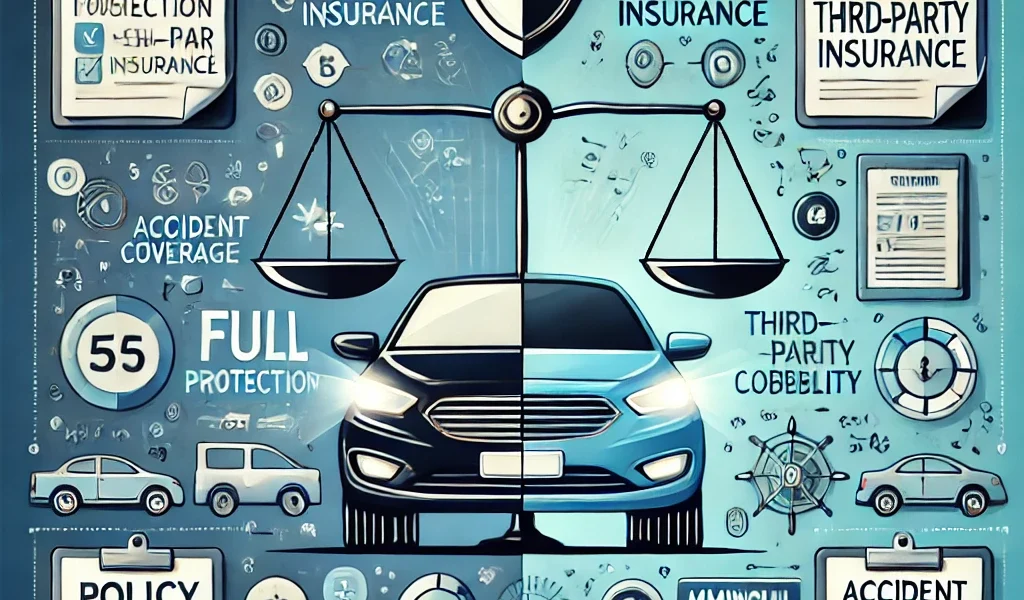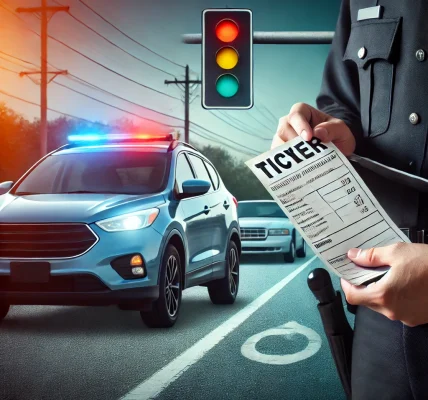Choosing the right car insurance policy is crucial for financial security and peace of mind. Two of the most common types of car insurance are Comprehensive Insurance and Third-Party Insurance. Understanding the differences between these options will help you make an informed decision that best suits your needs and budget.
In this guide, we will explore the key differences, benefits, and drawbacks of both types of car insurance, helping you determine which one is right for you.
What is Comprehensive Car Insurance?
Comprehensive car insurance provides extensive coverage for both your own vehicle and third-party liabilities. It protects against damages caused by accidents, natural disasters, theft, and vandalism.
Key Features of Comprehensive Car Insurance:
- Covers damages to your own vehicle due to accidents.
- Protects against theft, fire, and vandalism.
- Covers damages caused by natural disasters such as floods, storms, and earthquakes.
- Includes third-party liability coverage.
- May offer additional benefits like roadside assistance and personal accident cover.
Advantages of Comprehensive Car Insurance:
✔ Full Coverage: Provides protection for both your car and third-party damages. ✔ Financial Security: Saves you from high repair costs. ✔ Covers Non-Collision Damages: Protects against theft, vandalism, and natural disasters. ✔ Customizable: Additional add-ons like engine protection, zero depreciation, and roadside assistance are available.
Disadvantages of Comprehensive Car Insurance:
❌ Higher Premiums: More expensive than third-party insurance. ❌ May Have Exclusions: Some damages may not be covered, depending on the policy terms.
What is Third-Party Car Insurance?
Third-party car insurance is the most basic type of coverage, providing financial protection against damages caused to another person’s vehicle, property, or bodily injuries. However, it does not cover damages to your own car.
Key Features of Third-Party Car Insurance:
- Covers liability for injuries or damages caused to another person or their property.
- Legally mandatory in most countries.
- Does not cover damages to your own car.
- Lower premiums compared to comprehensive insurance.
Advantages of Third-Party Car Insurance:
✔ Affordable: Lower premiums make it cost-effective. ✔ Legally Required: Meets the minimum insurance requirements in most regions. ✔ Protects Against Legal Liabilities: Covers third-party injuries and property damage claims.
Disadvantages of Third-Party Car Insurance:
❌ No Coverage for Your Own Car: You will have to bear repair costs for your own vehicle. ❌ Limited Protection: Does not cover theft, fire, or natural disasters. ❌ No Additional Benefits: Lacks optional add-ons like roadside assistance and zero depreciation cover.
Key Differences Between Comprehensive and Third-Party Insurance
| Feature | Comprehensive Insurance | Third-Party Insurance |
|---|---|---|
| Covers Own Vehicle Damage | ✅ Yes | ❌ No |
| Covers Third-Party Damage | ✅ Yes | ✅ Yes |
| Covers Theft and Fire | ✅ Yes | ❌ No |
| Covers Natural Disasters | ✅ Yes | ❌ No |
| Covers Personal Injuries | ✅ Yes (if included) | ✅ Yes (third-party only) |
| Legal Requirement | ❌ No (optional) | ✅ Yes (mandatory) |
| Premium Cost | 💰 Higher | 💰 Lower |
Which Car Insurance is Right for You?
The choice between Comprehensive Insurance and Third-Party Insurance depends on several factors, including your budget, vehicle value, and personal requirements.
When to Choose Comprehensive Car Insurance:
✔ If you own a new or expensive car. ✔ If you live in an area prone to natural disasters or theft. ✔ If you want complete financial protection. ✔ If you drive frequently and want additional benefits like roadside assistance. ✔ If you can afford a higher premium for extensive coverage.
When to Choose Third-Party Car Insurance:
✔ If you have an older car with a low market value. ✔ If you are on a tight budget and want a low-cost insurance option. ✔ If you only need basic coverage to meet legal requirements. ✔ If you rarely drive your car and the risk of accidents is minimal.
How to Choose the Best Policy?
Here are some practical tips to help you decide between comprehensive and third-party car insurance:
- Evaluate Your Car’s Value: If your car is new or expensive, comprehensive insurance is a better choice.
- Assess Your Budget: Third-party insurance is more affordable, but it lacks complete protection.
- Consider Your Risk Exposure: If you live in an area with high theft rates or frequent natural calamities, comprehensive coverage is advisable.
- Check Policy Add-Ons: Comprehensive policies offer additional benefits that might be useful for your needs.
- Compare Quotes: Always compare insurance quotes from different providers to get the best deal.
- Review Legal Requirements: Ensure that your chosen policy meets the legal requirements in your region.
Conclusion
Both Comprehensive and Third-Party Car Insurance serve different purposes and cater to different needs. If you want complete protection for your car, comprehensive insurance is the best option. However, if you are looking for an affordable, legally compliant policy, third-party insurance is a cost-effective choice.
Before making a decision, carefully assess your personal circumstances, car value, and budget to select the best car insurance policy that suits your requirements. Always compare different insurers and read the policy terms carefully to ensure you get the best coverage without unnecessary expenses.



